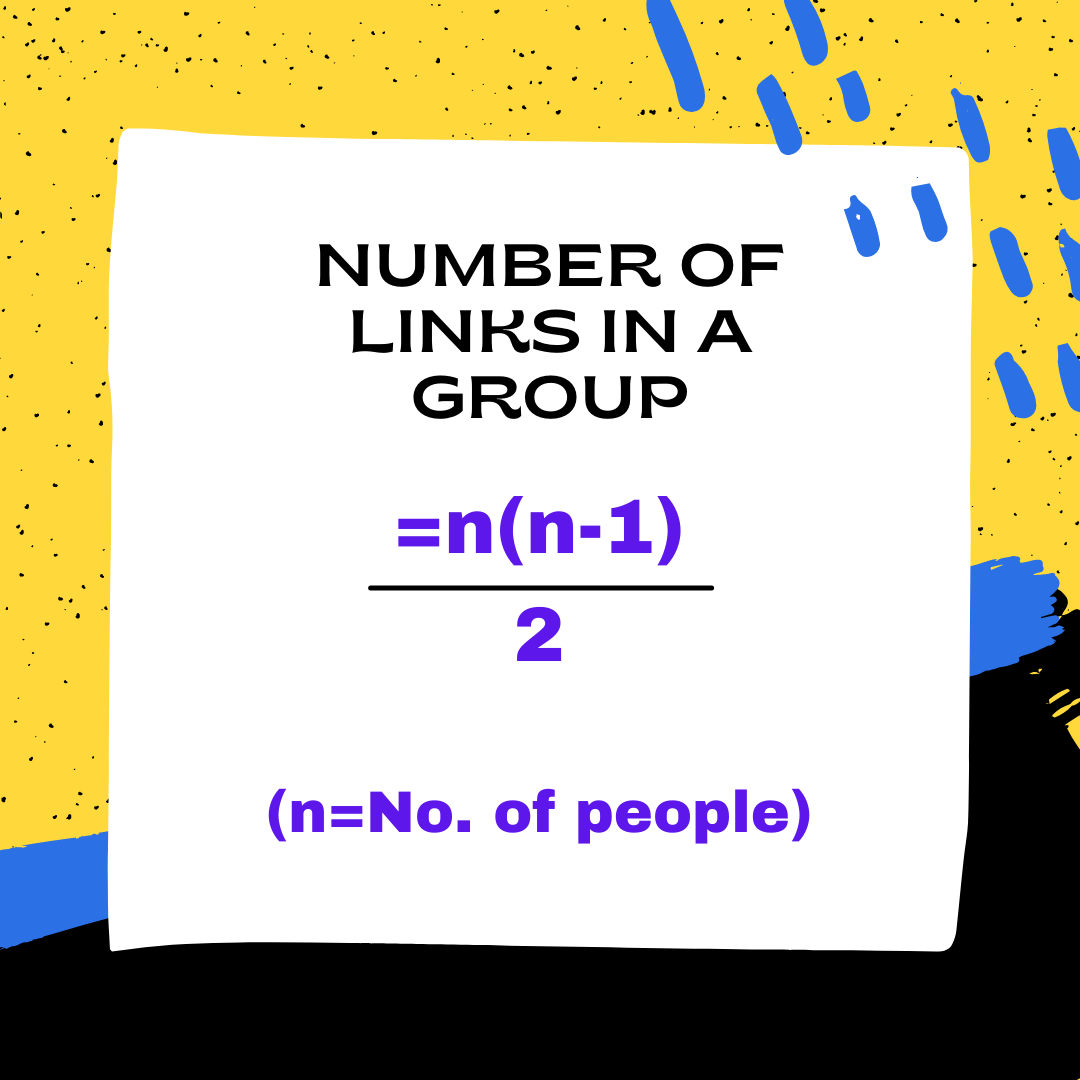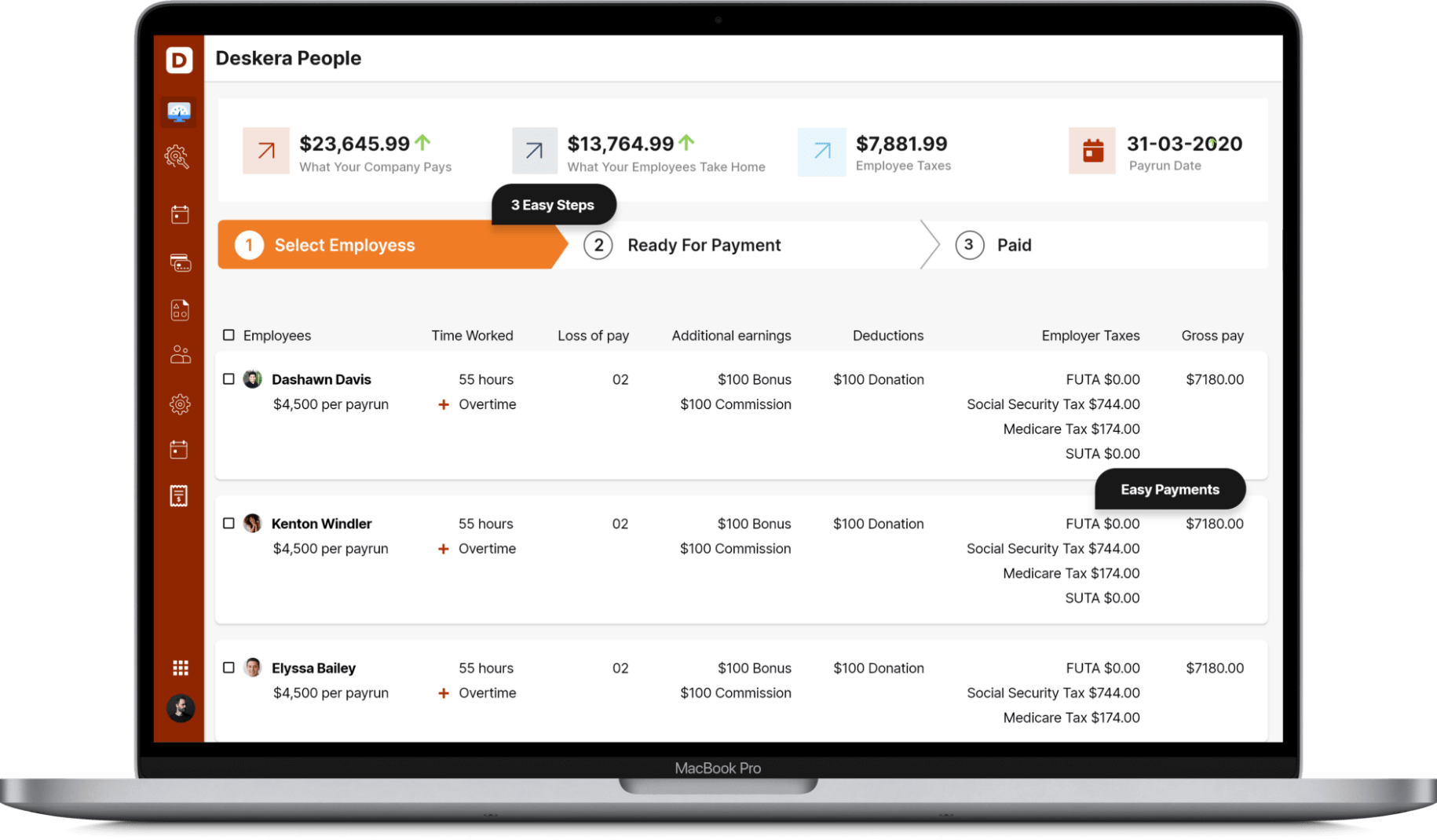For what reason are meetings viewed as the greatest time killer in the business world? As per a Harvard Business Review, a study that observed the Outlook schedules of different workers at huge organizations, consecutive weekly meetings can consume up to 300,000 hours per year of workers' time.

Amazon CEO Jeff Bezos has this standard: no meeting ought to be as huge to the point that two pizzas can't take care of the entire meeting. In this article, we shall gain an understanding of the rationale behind the Two-Pizza Rule. We will brush up through the following topics:
- What is Two-Pizza Rule?
- Why is the Two Pizza Rule significant?
- Pros of Small teams
- Why you should not have large team meetings?
- Guide to make your own two-pizza rule
What is Two-Pizza Rule?
The 2 pizza rule is for deciding the number of participants who ought to be welcomed to a meeting. As indicated by the standard, each meeting should be having an adequate number of participants that could be taken care of with two large pizzas.
Meetings might be a significant part of work culture, however, Amazon CEO has executed an exceptionally strict rule to make sure that his timetable is just loaded up with meetings that merit his time.
Fundamentally, meetings at Amazon ought to just have as many participants as could serenely share two pizzas. To this end, Two-Pizza groups were made, with the number of participants still decided by the size of the Italian delicacy. A standard American pizza ( 40 cm) consists of four parts. In this way, Amazon meetings are restricted to a limit of 8 individuals.
This is otherwise called the two pizza group idea, and the science behind it has even been affirmed by Stanford University. They found in their exploration that the most useful meetings have 7 ± 2 members.
Why 2 Pizzas?
Bezos' choice to keep meetings small to empower efficiency can be upheld by science. Subsequent to committing almost 50 years to the investigation of team performance, the late Harvard scientist J. Richard Hackman inferred that four to six is the ideal number of individuals for a project team and no work team ought to have more than 10 individuals.
As per Hackman, this is on the grounds that communication issues increment "dramatically as team size increments." Ironically, the bigger the team, the additional time will be spent on correspondence as opposed to generating work.
As per the Stanford study, gatherings with more than 9 participants are ineffective, as friction fills in relation to the increment in member numbers. Be that as it may, in meetings with under 5 individuals, you risk the members falling into groupthink.
This implies individuals in a meeting have a tendency to fall in with the majority part view, in spite of really having an alternate assessment or in any event, being persuaded that some unacceptable choice is being made. This phenomenon can have various causes, including not having any desire to cause trouble, uneasiness, needing to have a place, or other mental social reasons.
What number of individuals do two pizzas take care of?
As per an online pizza purchasing calculator, a medium 12" pizza is eight cuts and feeds three to four (in this way, three) individuals. By that rationale, the Two Pizza Rule directs the ideal gathering size ought to have around six individuals or eight individuals. Yet, that expects a medium pizza.
The pizza number cruncher puts a large 14" pie at between eight to ten cuts and takes care of three to ten individuals, so as a sanity check we're setting the reach for team sizes under the Two Pizza Rule as being somewhere in the range of six and ten individuals.
Why is the Two Pizza Rule significant?
Prevents information duplication: Paytm's Dhody accepts a less fatty team can likewise forestall information duplication since each group is accountable for a specific business area. They are the single proprietors of that space. No other individual in the association possesses that area, including the information or the services that power it.
It is perhaps the most proficient authoritative plan for structuring teams since it helps readiness and prevents information duplication. You don't have two teams that are gathering similar sort of information or adjusting similar sort of things.
Yet, it is significant to have a typical information framework and to have information streaming between the different teams. If not, it'll prompt a ton of inefficient consumption for the organization over the long haul.
Workers are more engaged: Smaller groups are frequently more connected with and feel a more prominent feeling of independence. With fewer degrees of the board to interface with, they can settle on decisions quicker. A new Gallup report showed that organizations in the U.S with less than 10 workers scored 42% commitment levels while the normal commitment level for greater organizations was under 30%.
Innovative: In a letter to investors in 2013, Bezos featured how having more modest, decentralized teams helped prod imagination and development. This decentralized appropriation of creation all through the organization - not restricted to the organization's senior chiefs - is the best way to get strong, high-throughput innovation.
Pros of Small teams
- You and your workers will be happy you invited them. They'll be more engaged. They'll feel special being a part of something that could be greater than themselves. They'll realize they're having a genuine effect on your clients' lives, in your worker's day-to-day routines, and in their own lives.
- Your business will normally profit from all the insight contained inside those little groups and those two pizzas.
- More modest meetings can create a sense of closeness which regularly prompts bolder and franker conversations.
- It's tough, if not worthless, to accumulate observational support proposing any single number is the ideal meeting size. That checks out. Indisputably the base number of individuals required for team consideration relies totally upon the association and the points over which the support is thinking.
- Fewer members likewise mean more opportunities to pay attention to and think about everybody's point of view. Thus, the meeting individuals feel appreciated and regarded, making them more useful. This proportion of receptiveness and lucidity in a little meeting can imply that actions and results can be all the more handily accommodated. Assuming meetings are small, they can remain dexterous and settle on choices all the more rapidly.
- The vast majority of the examination encompassing the role of team size in meeting productivity and decision-making effectiveness centers around evaluating a pattern. Studies habitually include involving the number of team individuals as an autonomous variable, estimating how unique dependent factors change as meeting size increments or diminishes.
We've investigated a couple of these factors underneath. In view of these and the different factors we investigated, one thing remains unmistakably clear. As meeting size builds, no powerhouse of usefulness and adequacy improves versus making a positive commitment to the result of a gathering. As a rule, these factors change at outstanding or near-exponential rates as more individuals are added to a team.
- The significant thing to search for while assessing the benefits of Amazon's Two Pizza Rule is whether elements affecting efficiency and viability of a team our dependent variables increments to such a level that the variable would turn out to be severely detrimental before we contact our ten-man Pizza Rule cap.
Why you should not have large team meetings?
- Bigger teams can make an overwhelming mental load for the individual participants.
- Scaling: There's a great deal of information to support the possibility of a lofty drop-off in productivity as team size increments. A couple of years prior, a group of business college professors tried an idea named the group scaling fallacy by asking two-and four-people teams to collect a lego figure.
The two-people groups averaged a completion time of 36 minutes while the three-people groups got started at a normal of 52 minutes. Productivity dropped practically half when only an additional team member was presented.
- When a team has surpassed its ideal number of individuals, every member needs to invest more energy in coordination and arranging, and that implies they possess less energy for the actual work.
- Links: In each team, there are various links between individuals. The expression links were utilized, to some degree indistinctly, by Organizational Psychologist J. Richard Hackman in a meeting with Harvard Business Review to depicts the social interconnectedness of group individuals. The more links between team individuals, the higher the risk of being blocked by the social and political impediments to ideal productivity and effectiveness. Hackman later uncovered his own shorthand for deciding meeting sizes, expressing "my guideline is no double digits".

A six-man team, the base team size is taken care of under the Two Pizza Rule has 15 links. The most extreme team size under the Two Pizza Rule, ten individuals, bring the number of links up to 45. 45 isn't a ton of links, however, that will be normal while restricting team size as per the Two Pizza Rule. Notwithstanding, the pattern begins to accelerate rapidly.
A team of 15 individuals has 105 links and a link of 20 has 190. Indeed, even at only ten individuals, there is as yet a normal of 45 links; 45 opportunities for social and political associations to haul down the productivity and efficiency of a meeting.
- There is a higher rate of delegating between team members, which is prone to errors and misunderstandings.
- There is a higher rate of assigning between team members, which is inclined to mistakes and misconceptions.
- Social Interactions: We've all been in a meeting wherein one individual secured the concentration, hauling the meeting right out of control. Most would agree that crashing the collective decision-making process with one's own social quirks requires the presence of social connections.
There is little information supporting that a bigger team size builds the risk of sinking the usefulness of a meeting and viability of decision making through friendly associations alone.
- As each team member currently needs to focus on a bigger number of individuals, the social cohesion of the team will become more vulnerable, contrarily influencing participation and heading in the long haul.
- The result is that individuals from larger than average teams will generally lose regard for the meetings. They get ready less ahead of time and begin to take a more detached - even resigned – role. The greater the team, the lower an individual‘s expectation that her contribution will be taken note of. This is the beginning of a descending spiral into very ineffective meetings.
Guide to make your own two-pizza rule
The two-pizza rule might sound basic, yet there's some work that goes into making it fruitful at a small organization. This is the way to apply Bezos' way to deal with your business.
1. Observe your pizza number: Each organization has an interpretation of the two-pizza rule. It's basically your solution to this question: What number of individuals do I truly need to make [X] viable?
So assuming you have four workers, perhaps your business has a one-pizza rule that assists you with making meetings more successful, which means, you don't have meetings that are bigger than a few people groups. Since meetings bigger than that aren't as useful. What number of individuals should you be involved in to make any business situation more effective?
Let the number of pizza servings fill in as a psychological note for when you begin going over or under the board with getting input. Perhaps:
- You don't settle on important choices without showing them to a few groups.
- You don't recruit workers without having them interview with a few colleagues.
- You don't launch out a new service or product without testing it with a few current clients.
Decide the number of individuals you need to get at different moments, and then bring that into practice.
2. Know how much your worker's and your time is worth: Observe the last meeting you have been a part of and then also include the hourly expense of each individual in the room. That is, the sum everybody makes each hour, notwithstanding assuming they're salaried or hourly employees.
Then, at that point, factor in the opportunity cost for what each individual in the room could be accomplished as opposed to paying attention to Skip from designing discussion regarding notable new advances in transport innovation. That is, the income individuals could be created by dealing with new ventures, transforming leads into deals, and fixing issues that decrease costs.
Then, at that point, envision which shouldn't be hard assuming you're an entrepreneur that you write the check for that meeting. Presently does it feel to have that large number of individuals go to that $500 meeting? Shrewd entrepreneurs embrace the reverse square rule of meetings:
The more individuals in the room the less really get finished. Also, the more it expenses to finish less. Small groups cost less. That allows you to explore more. That allows you to attempt more things. For the time and cost of one huge group, three small meetings can test, carry out, amend, and streamline three new ideas. So drop that meeting. All things considered, you can:
- Send an email with the primary concerns and everybody's action items.
- Have a stand-up meeting over Slack.
Or then again have the meeting if in-person cooperation is fundamental. In any case, provided that you follow your own variant of the two-pizza rule.
3. Ensure your workers have integral ranges of abilities: Having more individuals in the group normally makes the potential for more noteworthy variety. At face esteem, yes. More individuals should approach more prominent variety in experiences, perspectives, and backgrounds. That is the reason you want to make small groups with individuals who have corresponding abilities.
- One individual may be an extraordinary cooperative person who is actually more fragile all alone.
- Another may be moderately unpracticed yet has the amazing hustle and drive.
- Another may be an overall maverick who is an exceptional issue solver.
While you presumably can't afford to have more than one of each "type," you certainly need one. Keeping groups small means every individual's interesting abilities, gifts, and points of view won't just be heard yet in addition esteemed and used.
4. Know the indications of loafing and groupthink and stop them:
Groupthink: Seeking input is normal. The vast majority of us were prepared to actively solicit opinions, bounce thoughts off others, and run thoughts up acknowledged flagpoles to bridle the unimaginable force of a group all of which will assist us with settling on better business choices.
With the exception of this: Larger groups are bound to succumb to groupthink, which is the point at which they desire to arrive at an agreement that surpasses the presence of mind. Groups grind away the edges and the sharp corners. The bigger the group, the more probable individuals are to consider justifications for why something won't work.
And that really intends that after the entirety of the info, and feedback backing, what remains is the center ground of keeping it simple and safe. You don't need that.
Whenever a small group settles on a choice or handles an undertaking, the result is considerably more personal. Their energy, inspiration, and feeling of obligation are on the line.
And that implies they'll put in more effort, if by some stroke of good luck to substantiate themselves right.
Loafing: Small groups likewise result in essentially less social loafing, a term used to depict the discouragement that outcomes from feeling lost in a group.
Analysts found that output per individual declines as the size of the team increments. At the point when teams get bigger, you experience less prevalent difficulty and feel less liability in light of the fact that your performance becomes difficult, or even unimaginable, to accurately survey in the midst of a crowd.
So, individuals from small groups care more than individuals from large groups.
How Deskera Can help You?
Deskera People provides all the employee's essential information at a glance with the employee grid. With sorting options embedded in each column of the grid, it is easier to get the information you want.

Key Takeaways
- The Two Pizza Rule is, by all signs, an incredible shorthand for effectively restricting the size of a meeting. Indeed, even on bigger boards, the Two Pizza Rule can be applied to more modest boards meetings.
- One should target having ten individuals in a meeting. Each extra meeting member added beyond the ten-man cap definitely expands the different variables adding to insufficient correspondence and poor productivity.
- Research shows that fewer meetings can support worker and organizational efficiency, and numerous different pioneers have techniques like Bezos' for reigning in what they see as time-wasting social affairs.
- Bezos utilizes this methodology at his organization, where he allows his workers to adhere to a strict 32-hour week's worth of work plan throughout the summer, and a 40-hour week's worth of work during the rest of the year.
Related articles







